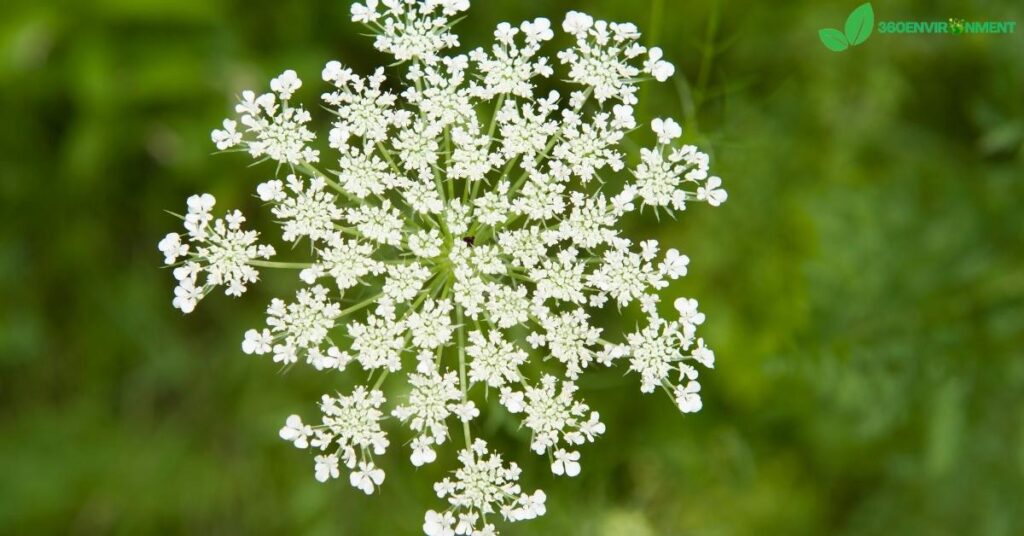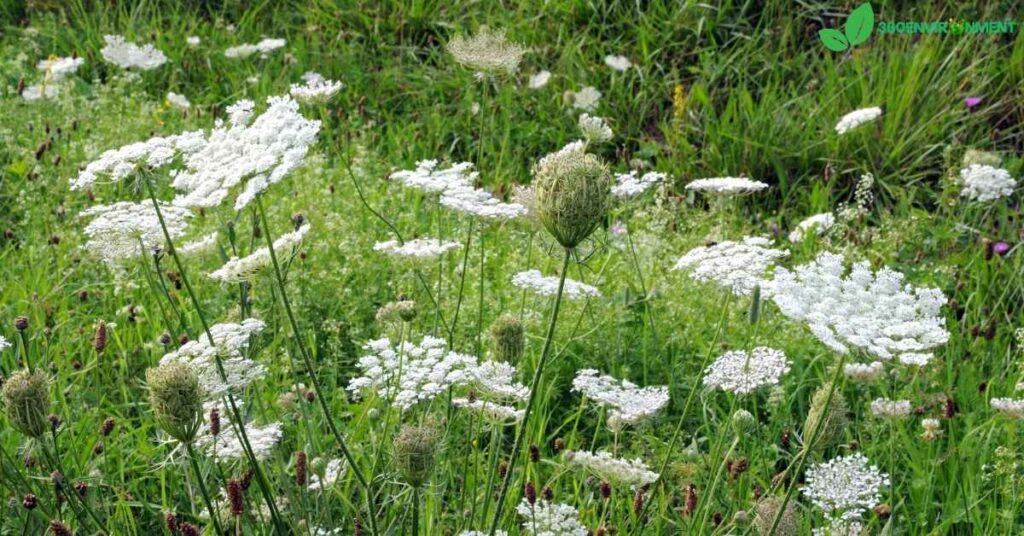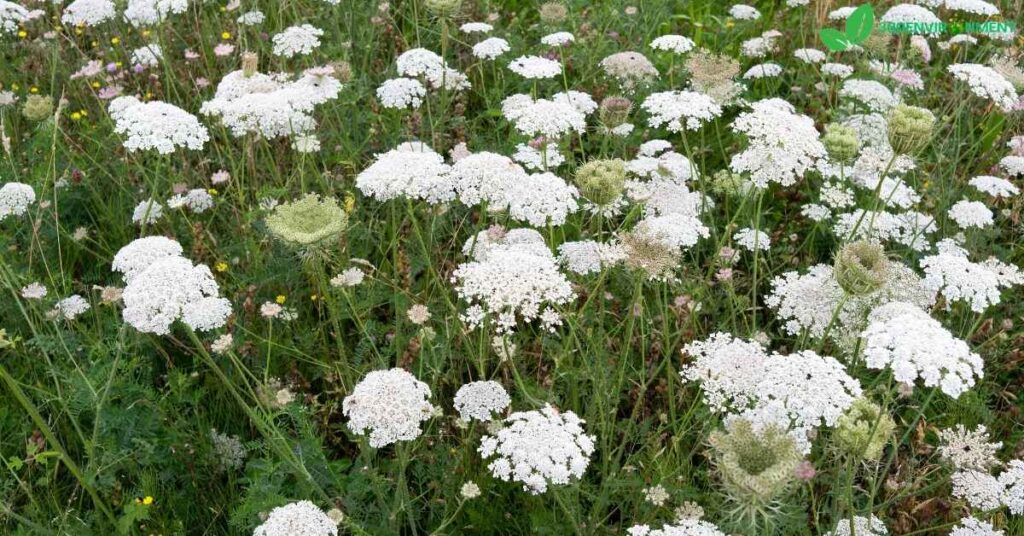Wildflowers are more than just a splash of color across the countryside; they are vital components of ecosystems, supporting pollinators, enriching soil, and contributing to biodiversity. Among these delicate blossoms, some wildflowers carry intriguing histories and names that link them to royalty. In this article, we will explore one such wildflower with a royal name, delving into its unique ecological role, historical significance, and the conservation challenges it faces.
1. Introduction to the Wildflower with a Royal Name

When we think of royalty, images of crowns, regal robes, and grand ceremonies come to mind. However, nature also holds its own court of royal beauty, and among these is the wildflower with a royal name: Queen Anne’s Lace (Daucus carota). This wildflower, common in many temperate regions, has a rich history and an important role in ecosystems. The plant is named after Queen Anne, the wife of King James I of England, and its name reflects both beauty and a story of delicate craftsmanship.
This article will focus on the ecology of Queen Anne’s Lace, its historical background, and its place in conservation efforts. Additionally, we’ll explore why this wildflower with a royal name deserves protection and appreciation as part of our natural heritage.
2. The Ecological Niche of Queen Anne’s Lace

2.1 Habitat and Range
Queen Anne’s Lace is a perfect example of a wildflower with a royal name that is native to Europe but has spread to North America, where it is considered both a wildflower and a naturalized plant. It thrives in a variety of habitats, from meadows and fields to roadsides and waste areas. The adaptability of Queen Anne’s Lace to different environments has allowed it to become a common sight across landscapes. It prefers well-drained, dry soils and can be found growing in sunny locations.
As a member of the carrot family (Apiaceae), Queen Anne’s Lace plays a crucial role in its ecological niche. The plant’s deep roots help stabilize soil, preventing erosion in areas with disturbed ground. Its flowers, which bloom in mid to late summer, provide nectar for pollinators, making it a key player in supporting insect biodiversity.
2.2 Pollinators and Wildlife Support
One of the most important ecological roles of this wildflower with a royal name is its relationship with pollinators. The flat-topped clusters of tiny white flowers attract a wide variety of insects, including bees, butterflies, beetles, and flies. The intricate flower structure offers easy access to nectar, making it a popular foraging site for pollinators. These insects, in turn, help pollinate other plants, contributing to a healthy and diverse ecosystem.
In addition to supporting pollinators, Queen Anne’s Lace serves as a host plant for the larvae of the black swallowtail butterfly (Papilio polyxenes). The caterpillars feed on the leaves of the plant, relying on it for their development before metamorphosing into butterflies. By hosting such species, this wildflower with a royal name helps maintain the population of these pollinators, which are vital for agricultural crops and wild plants alike.
2.3 Soil Health and Regeneration
Queen Anne’s Lace also contributes to soil health through its root system. The plant’s taproot, which can reach deep into the ground, helps break up compacted soil, improving aeration and water infiltration. In areas where soil has been degraded or disturbed, such as construction sites or overgrazed fields, Queen Anne’s Lace can play a role in soil regeneration. Its ability to grow in poor soil conditions makes it an important pioneer species in ecological restoration efforts.
Additionally, the presence of Queen Anne’s Lace in plant communities can indicate healthy soil, as it often thrives in areas where other plants might struggle. As it dies back each year, the organic matter it adds to the soil enhances fertility, supporting the growth of other plants.
3. Historical and Cultural Significance

3.1 The Legend Behind the Name
Queen Anne’s Lace is not just another wildflower—it is a wildflower with a royal name that carries with it a piece of historical folklore. According to legend, the flower was named after Queen Anne of England, who was known for her intricate lace-making skills. The story goes that Queen Anne, while crafting lace, pricked her finger with a needle, and a drop of blood fell onto the white lace. The small, dark red flower in the center of Queen Anne’s Lace is said to represent that drop of blood, adding a touch of romance and mystery to the plant’s story.
This connection to royalty has made Queen Anne’s Lace a symbol of delicate beauty, much like the intricate lace patterns it is named after. In the Victorian language of flowers, this wildflower with a royal name was often used to represent protection and sanctuary, reflecting its robust yet graceful nature.
3.2 Culinary and Medicinal Uses
Beyond its beauty, Queen Anne’s Lace has been used for culinary and medicinal purposes for centuries. The plant is closely related to the cultivated carrot, and in fact, its roots are edible when young. In some cultures, the roots of this wildflower with a royal name have been used in soups and stews, though caution is necessary due to its similarity to poisonous plants like poison hemlock (Conium maculatum).
Medicinally, Queen Anne’s Lace has been used in traditional herbal remedies for various ailments. It was believed to aid in digestion, and its seeds were used as a diuretic and to relieve bloating. Some cultures also used the plant for its purported ability to stimulate menstruation. While modern medicine has largely replaced these remedies, the historical uses of this wildflower with a royal name offer insight into the ways humans have interacted with wild plants over time.
4. Conservation Status and Challenges

4.1 Invasive Potential in Non-native Regions
While Queen Anne’s Lace is celebrated in its native regions, its introduction to non-native areas has raised concerns about its potential to become invasive. In parts of North America, particularly in disturbed habitats, Queen Anne’s Lace can outcompete native plants, reducing biodiversity. Its ability to quickly colonize open spaces means that it can dominate fields and meadows, sometimes at the expense of other wildflowers.
This invasive potential has led to its classification as a weed in some areas, where land managers work to control its spread. However, it’s important to strike a balance between managing its invasive tendencies and recognizing its ecological value in supporting pollinators and improving soil health.
4.2 Habitat Loss and Declining Pollinators for Wildflower With a Royal Name
Like many wildflowers, this wildflower with a royal name faces challenges related to habitat loss. As agricultural expansion, urban development, and changes in land use continue to reduce wild spaces, the habitats where Queen Anne’s Lace thrives are shrinking. This loss of habitat not only affects the plant itself but also the pollinators and wildlife that depend on it.
Additionally, the global decline in pollinator populations, particularly bees, poses a threat to the species that rely on Queen Anne’s Lace. The loss of pollinators could disrupt the plant’s reproduction, leading to reduced populations over time. Conservation efforts aimed at protecting pollinators, such as creating pollinator-friendly habitats and reducing pesticide use, are crucial for the survival of this wildflower with a royal name and other wildflowers.
5. The Role of Wildflowers in Conservation

5.1 Wildflowers as Biodiversity Hubs
Wildflowers like Queen Anne’s Lace are often overlooked in conservation efforts, but they play a crucial role in supporting biodiversity. By providing food and habitat for pollinators, wildflowers help maintain healthy ecosystems. In turn, these pollinators support the reproduction of many other plants, creating a ripple effect that benefits entire ecosystems.
In addition to their ecological value, wildflowers contribute to the aesthetic and cultural value of landscapes. They inspire artists, writers, and nature lovers, reminding us of the beauty and complexity of the natural world.
5.2 Wildflower Conservation Efforts
Conservation efforts focused on wildflowers are gaining momentum, particularly as awareness grows about the importance of pollinators. Initiatives such as planting wildflower meadows, restoring native grasslands, and creating urban wildflower gardens are helping to protect species like Queen Anne’s Lace. These efforts not only benefit wildlife but also enhance the resilience of ecosystems in the face of climate change and habitat loss.
6. Cultivating Queen Anne’s Lace: A Garden Treasure

For those who appreciate the beauty and ecological value of Queen Anne’s Lace, cultivating this wildflower with a royal name in home gardens is a wonderful way to support biodiversity. While it can be grown from seed, gardeners should be mindful of its potential to spread. Planting Queen Anne’s Lace in controlled areas or using it in wildflower mixes can create a pollinator-friendly garden that attracts bees, butterflies, and other beneficial insects.
Additionally, Queen Anne’s Lace pairs well with other native wildflowers, such as black-eyed Susans (Rudbeckia hirta) and purple coneflowers (Echinacea purpurea), creating a diverse and vibrant garden that supports both wildlife and soil health.
7. Future Prospects: Protecting Wildflowers for Future Generations
As we look to the future, the conservation of wildflowers like this wildflower with a royal name becomes even more critical. With growing threats from climate change, habitat destruction, and declining pollinator populations, it is essential to protect the natural habitats that support these plants. By fostering an appreciation for wildflowers and their ecological roles, we can inspire future generations to take action in preserving biodiversity.

7.1 Climate Change and Wildflower Habitats
Climate change presents a significant challenge for many species of plants and animals, and wildflowers like Queen Anne’s Lace are no exception. As temperatures rise and precipitation patterns shift, the habitats where this wildflower with a royal name thrives may begin to change. Regions that once provided ideal conditions for its growth may become less hospitable, while new areas may open up as potential habitats. However, this shifting landscape is not without its challenges.
In areas where Queen Anne’s Lace has been introduced, such as North America, climate change may exacerbate its invasive potential. Warmer temperatures and altered weather patterns can create more opportunities for this wildflower with a royal name to spread, outcompeting native species and altering the balance of ecosystems. This makes it even more important for conservationists to closely monitor its growth and to implement management practices that mitigate its spread while protecting its ecological benefits.
In regions where Queen Anne’s Lace is native, climate change may lead to a reduction in its suitable habitat. As a plant that prefers temperate climates, rising temperatures could push Queen Anne’s Lace to higher elevations or more northern latitudes, potentially fragmenting its populations. This shift could also affect the pollinators and wildlife that rely on this wildflower with a royal name as part of their life cycles, creating cascading effects throughout ecosystems.
7.2 Climate-Resilient Conservation Practices
To address the impacts of climate change on this wildflower with a royal name and other wildflower species, conservationists must adopt climate-resilient practices. These include:
- Creating Migration Corridors: As species are forced to migrate due to changing climates, establishing migration corridors that allow wildflowers and pollinators to move to more suitable habitats is critical. This helps maintain biodiversity and ensures the survival of species like Queen Anne’s Lace.
- Restoring Degraded Ecosystems: In areas where habitats have been degraded by human activities, restoration efforts can help re-establish the ecological balance needed for wildflowers to thrive. Rewilding efforts, such as planting native species and improving soil health, create resilient ecosystems that can better withstand climate change.
- Protecting Pollinators: Given the crucial role of pollinators in the reproduction of Queen Anne’s Lace, ensuring their protection is vital. Supporting bee populations, butterflies, and other pollinators through habitat creation, reduction of pesticide use, and promoting biodiversity in agricultural landscapes are key strategies in building climate-resilient ecosystems.
- Fostering Native Wildflower Gardens: Encouraging gardeners to cultivate native species like Queen Anne’s Lace and other pollinator-friendly wildflowers can provide sanctuaries for both plants and insects. These micro-habitats can play an important role in supporting biodiversity on a local scale, even in urban environments.
7.3 Community Involvement in Wildflower Conservation
One of the most effective ways to ensure the survival of wildflowers like Queen Anne’s Lace is through community involvement. Educating the public about the ecological significance of this wildflower with a royal name can inspire conservation action at a grassroots level. Local garden clubs, environmental organizations, and schools can play a role in raising awareness and fostering a culture of stewardship for wildflowers and the ecosystems they support.
Programs that engage local communities in wildflower conservation, such as “adopt-a-wildflower” initiatives or citizen science projects, can have a direct impact on preserving species like Queen Anne’s Lace. By encouraging the public to participate in monitoring wildflower populations, restoring native habitats, and reducing the spread of invasive species, communities can become active participants in the effort to protect biodiversity.
Conclusion: A Wildflower with a Royal Legacy
The story of Queen Anne’s Lace is one that beautifully intertwines nature, history, and culture. This wildflower with a royal name has long captured the imaginations of people with its delicate beauty and its fascinating connection to royalty. However, its significance extends far beyond its ornamental value. Queen Anne’s Lace plays a crucial role in supporting ecosystems, from providing nectar for pollinators to improving soil health.
As we face growing environmental challenges, including climate change, habitat loss, and declining pollinator populations, the conservation of wildflowers like Queen Anne’s Lace is more important than ever. By understanding the ecological role of this wildflower with a royal name, we can take steps to protect not only the plant itself but the countless species that rely on it.
Conservationists, land managers, gardeners, and local communities all have a role to play in safeguarding the future of this regal wildflower. By fostering an appreciation for the beauty and ecological value of Queen Anne’s Lace, we can ensure that this wildflower with a royal name continues to thrive in its natural habitats for generations to come.

